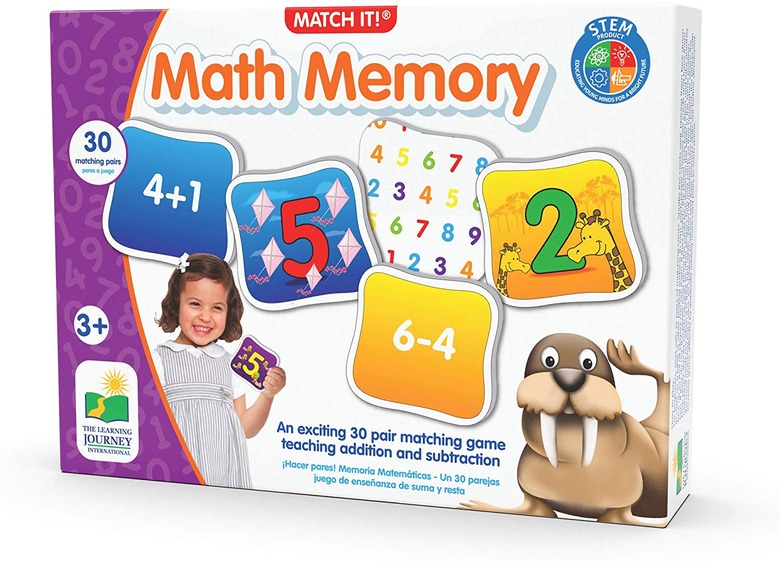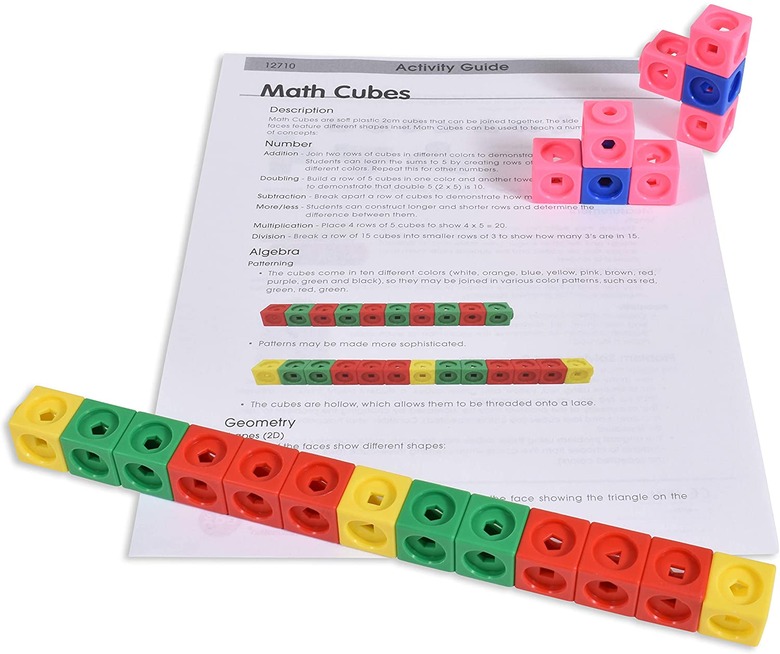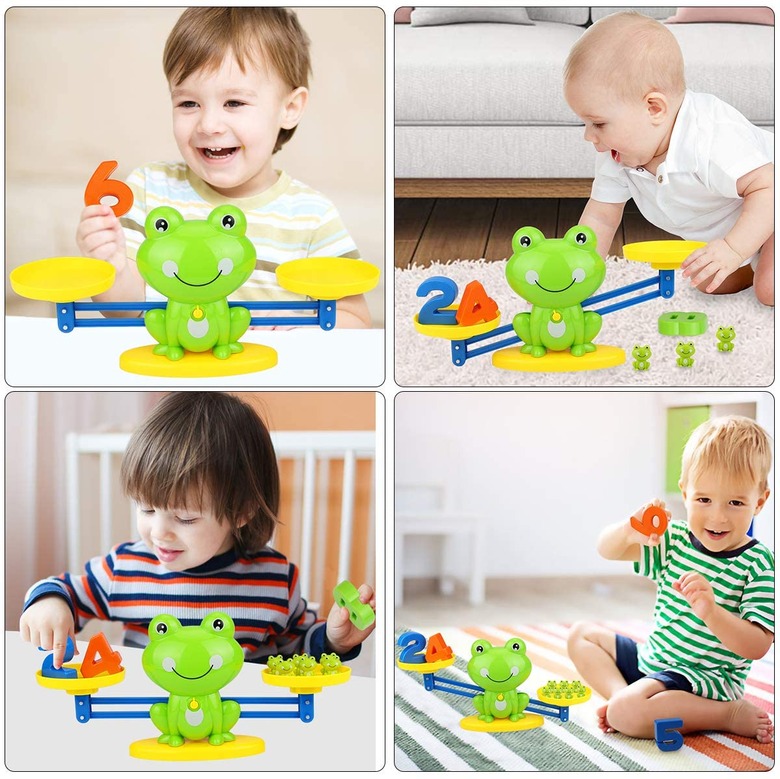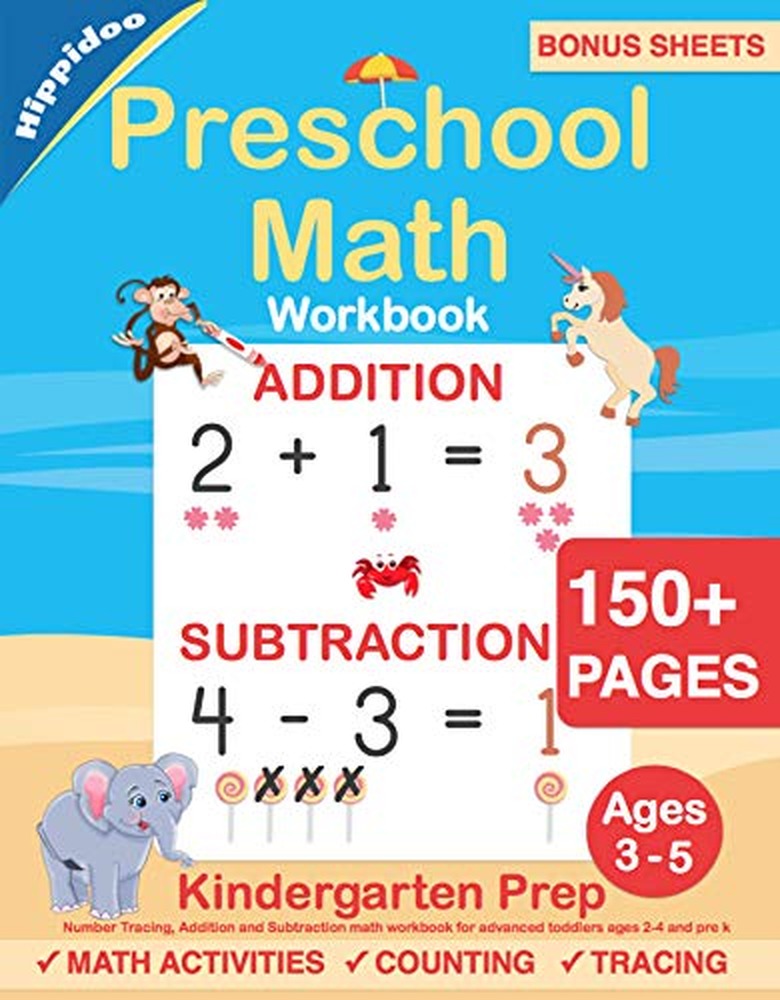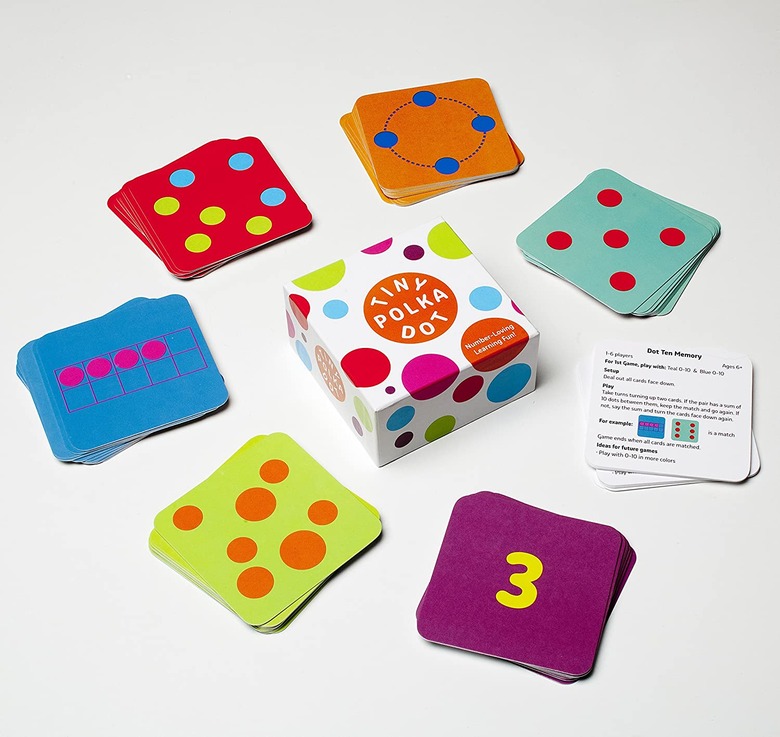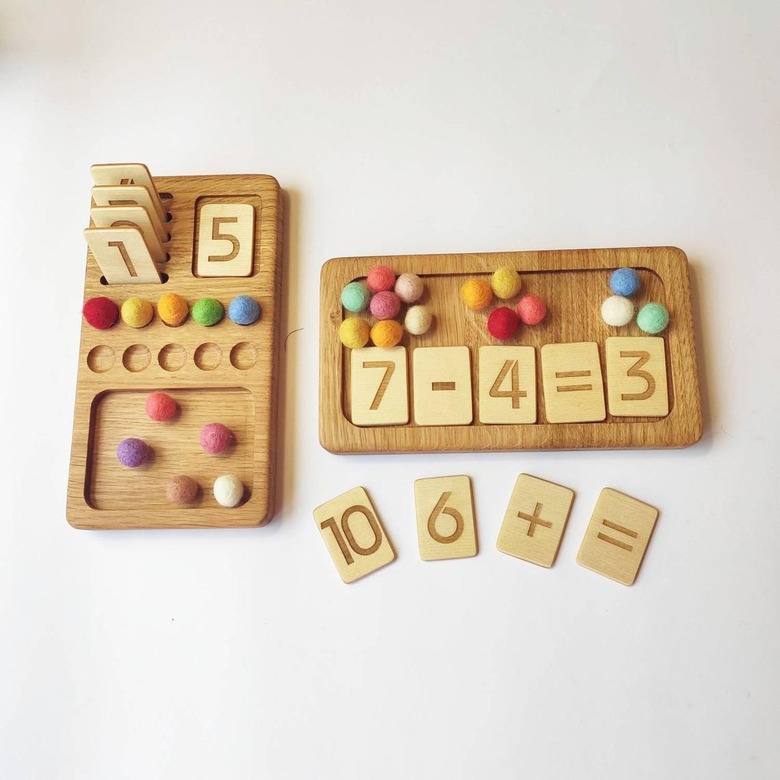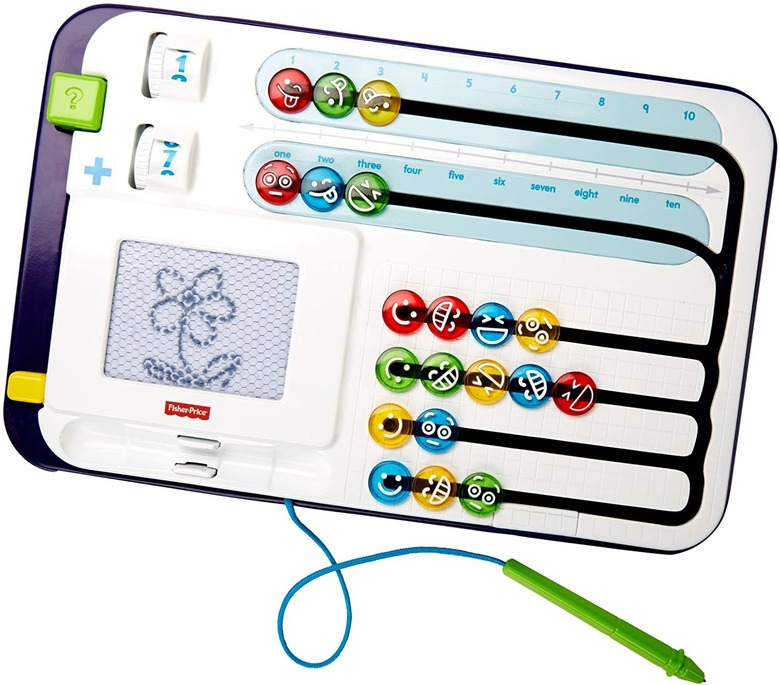7 Fun Games & Activities That Give Your Kid A Head-Start In Math
We may receive a commission on purchases made from links.
Sciencing may earn compensation through affiliate links in this article.
A lot of kids grow up hating math. But both through your school years and later in life, it's a vital skill that you need some type of understanding of.
The good news is that you can start to pick up math skills from early childhood, and there are many fun ways to learn other than just memorizing answers and formulae. In fact, there are many great math games and activities that are perfect to help preschoolers (and younger kids!) get a grasp of the most important concepts and ideas that will lead them through the early years of school. You can find many free printable worksheets, but if you want something more hands-on, there are plenty of options out there.
The Learning Journey: Match it!
The Learning Journey:
Match it!
The Match it! game from the Learning Journey aims to teach number recognition, basic addition and subtraction through a memory-based card matching game. It can be played alone or with up to three friends, so it offers a good balance of opportunities for solo learning at home and collaborative play for kids aged 3 and up. The basic aim of the game is to match the card containing the problem (for example, 4 + 2) up with its answer (6), helped along the way by pictures on the answer cards which give a visual indication of the meaning of the number.
This is a great choice for a first math game for kids, starting with the very basics but building up some crucial skills in mathematics, memory, focus and social play.
**Available at Amazon:** US&ref=as_li_ss_tl'>The Learning Journey Match it! Game
EdxEducation Math Cubes
EdxEducation Math
Cubes
The Math Cubes set from EdxEducation is a great choice if you're looking for math activities for preschoolers that feel a lot more like play than math. Essentially, the toy is a set of 100 cubes in 10 different colors, which snap together easily and have geometric shapes on five of their sides – a circle, square, triangle, pentagon and hexagon. At the most basic level, they can simply be used to create structures and to make patterns with colors, shapes or both.
However, the included activity guide helps you take the learning much further than that, using the blocks to introduce basic math skills. This includes demonstrating the basic operations in math – addition, subtraction, multiplication and division – as well as introducing some key concepts in algebra, problem solving and general reasoning. They're suitable for kids aged 3 and up.
**Available at Amazon:** US&ref=as_li_ss_tl'>EdxEducation's Math Cubes
Aitbay Libra Frog
Aitbay Libra Frog
The Libra Frog balancing game from Aitbay is one of the more intuitive preschool math activities because it teaches the basics of number identification and addition using the more hands-on skill of making weights balance on either side of a scale. It's intended for preschoolers ages 3 to 5, and comes with a frog scale (as well as a base and weighing trays for either side), 30 double-sided "question" cards, 19 little frogs to count with and colorful plastic numbers for 1 to 10.
The simplest level of the game uses cards that show both the actual number and the amount of frogs it corresponds to, so your kid can practice their counting skills and add the number to one side of the scale and the appropriate amount of frogs to the other. A slightly more advanced variant on the same thing simply shows the number and leaves your kid to work out the corresponding amount of mini frogs. Finally, the last level introduces basic addition problems, with the combined weight of both numbers equaling the right amount of frogs.
**Available at Amazon:** US&ref=as_li_ss_tl'>Aitbay Libra Frog Balancing Game
Preschool Math Workbook
Preschool Math
Workbook
The Preschool Math Workbook is a little more hands-on than the preschool math activities mentioned so far, but incorporates drawing, tracing and coloring alongside math lessons that lead preschoolers aged 2 to 5 up from the very basics to bigger math concepts like addition and subtraction. The book contains over 150 pages, with six major steps for learning, as well as a bonus, involving tracing out the shapes of higher numbers.
The first stage is tracing the numbers 1 to 10; the second introducing counting; the third introduces matching numbers and sequences; the fourth directions and manipulatives; the fifth addition; and finally the sixth introduces subtraction.
**Available at Amazon:** US&ref=as_li_ss_tl'>Preschool Math Workbook
Math for Love Tiny Polka Dot
Math for Love Tiny
Polka Dot
Tiny Polka Dot from Math for Love is a simple game based around polka dots that aims to teach counting, arithmetic and logic to kids aged 3 to 8, with anything from one to six players per game. The box actually contains 16 different math games, which are all easy to learn and play, and have dedicated cards with rules and illustrated examples. Some of the games involve matching numbers of dots on cards, but there are also cover variations of classic card games, such as Go Fish and 21.
**Available at Amazon:** US&ref=as_li_ss_tl'>Math for Love's Tiny Polka Dot Game
Wooden Math Board from ThreeWoodShop
Wooden Math Board
from ThreeWoodShop
The Wooden Math Board is a simple yet beautiful board that uses a combination of reversible tiles and woolen balls to teach the basics of counting, addition and subtraction. The board itself has two sides, with one side having a spot to display a number card and ten spots so your child can add the corresponding number of woolen balls. The other side has a larger space for you to use the number cards (five in total, which are reversible so they cover the numbers 1 to 10) and the operation cards (with +, − and =) to set up simple math problems you can use the balls to help you solve.
**Available at Etsy:** [threewoodShop's Wooden Math Board Game Set](https://www.etsy.com/listing/751922653/wooden-math-board-with-set-of-reversible
Fisher Price Think & Learn Count & Add Math Center
Fisher Price Think
& Learn Count & Add Math Center
The Think & Learn Count & Add Math Center is a perfect way to introduce counting numbers, expressing numbers in different ways and addition to preschoolers. The toy has a few key parts: a magnetic writing pad, a series of beads linked up to two scales that count the beads as both numbers and written as words, and a "game" section where the board randomly generates two numbers to be added together. This is a really intuitive way to teach kids addition, making the link to basic counting practice clear.
**Available at Amazon:** US&ref=as_li_ss_tl'>Fisher-Price's Think & Learn Count & Add Math Center
Cite This Article
MLA
Johnson, Lee. "7 Fun Games & Activities That Give Your Kid A Head-Start In Math" sciencing.com, https://www.sciencing.com/math-activities-for-preschoolers-13764457/. 17 May 2021.
APA
Johnson, Lee. (2021, May 17). 7 Fun Games & Activities That Give Your Kid A Head-Start In Math. sciencing.com. Retrieved from https://www.sciencing.com/math-activities-for-preschoolers-13764457/
Chicago
Johnson, Lee. 7 Fun Games & Activities That Give Your Kid A Head-Start In Math last modified August 30, 2022. https://www.sciencing.com/math-activities-for-preschoolers-13764457/

